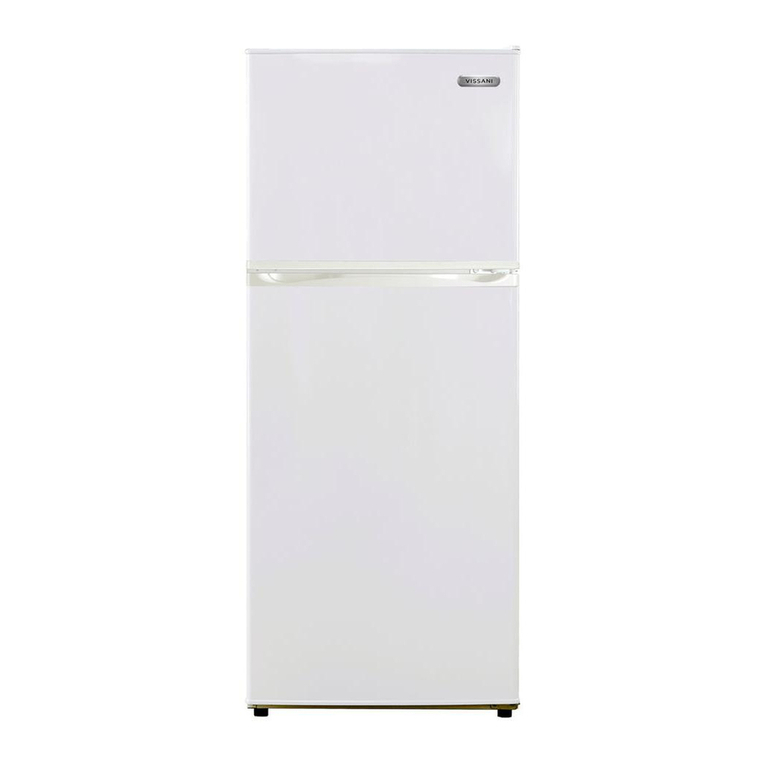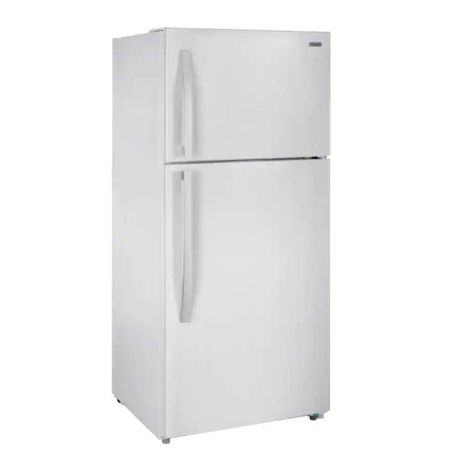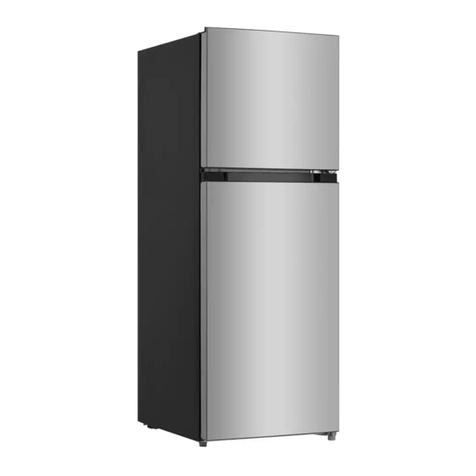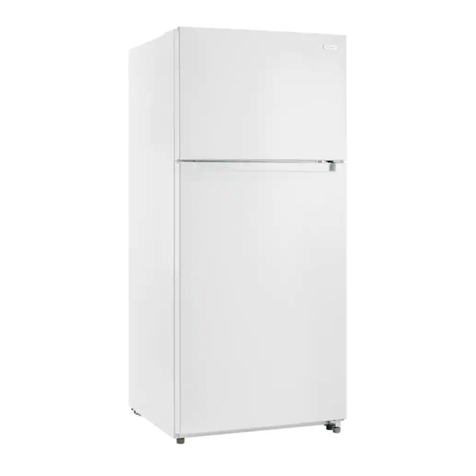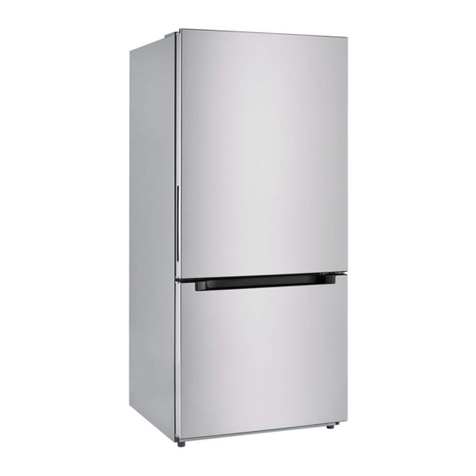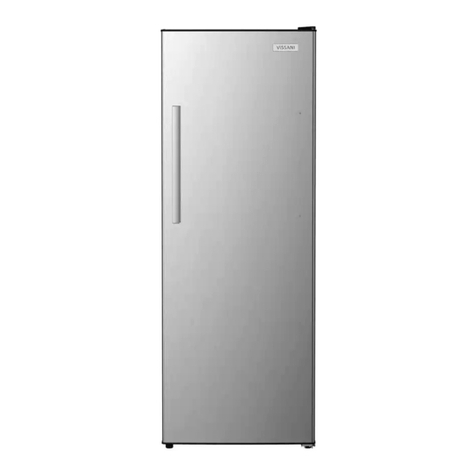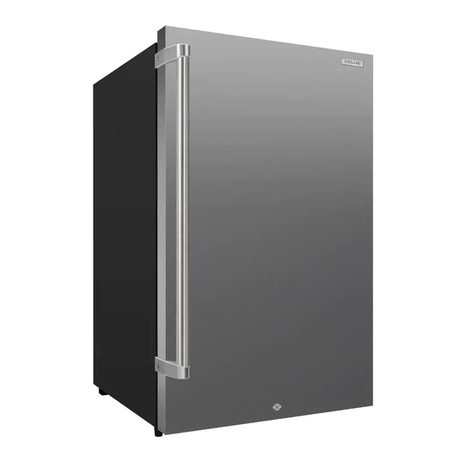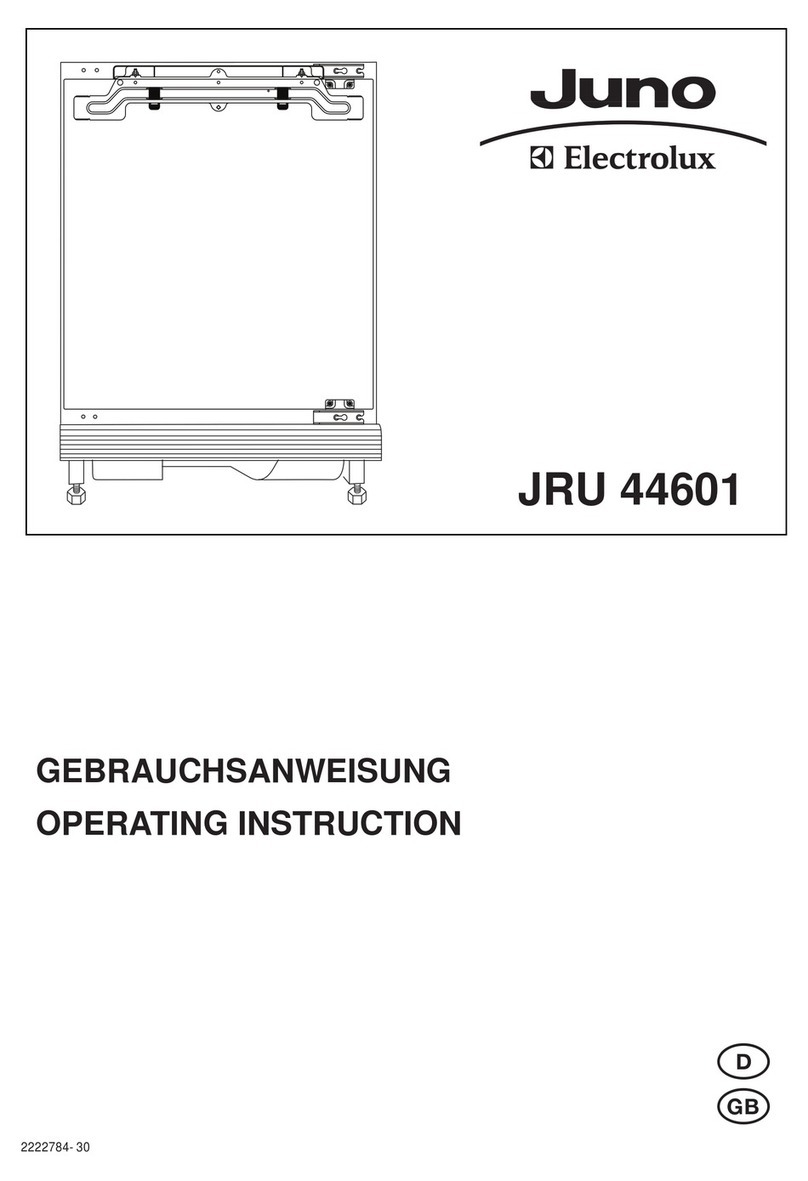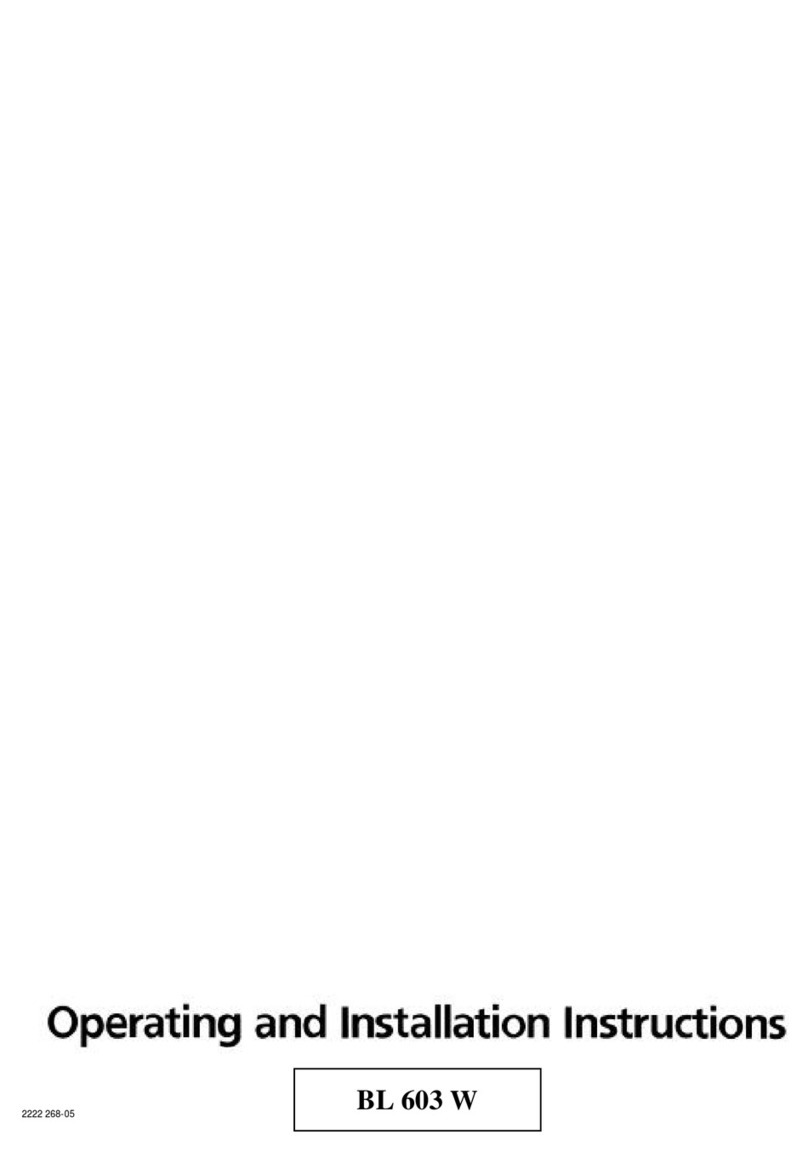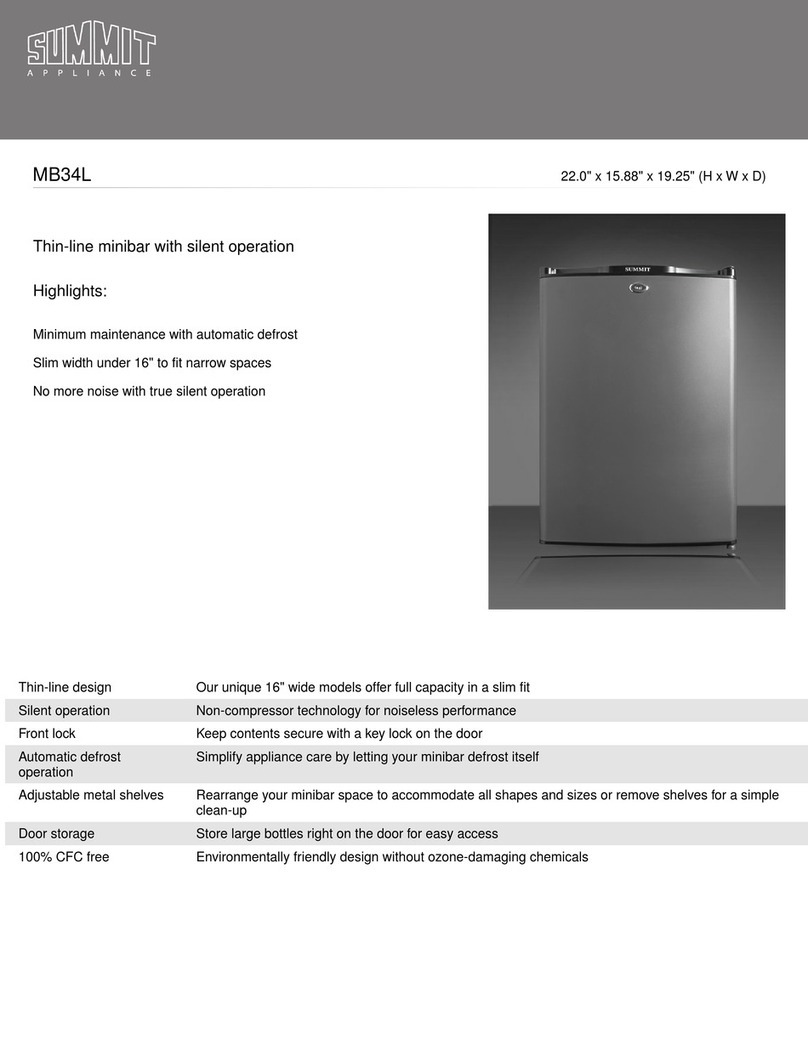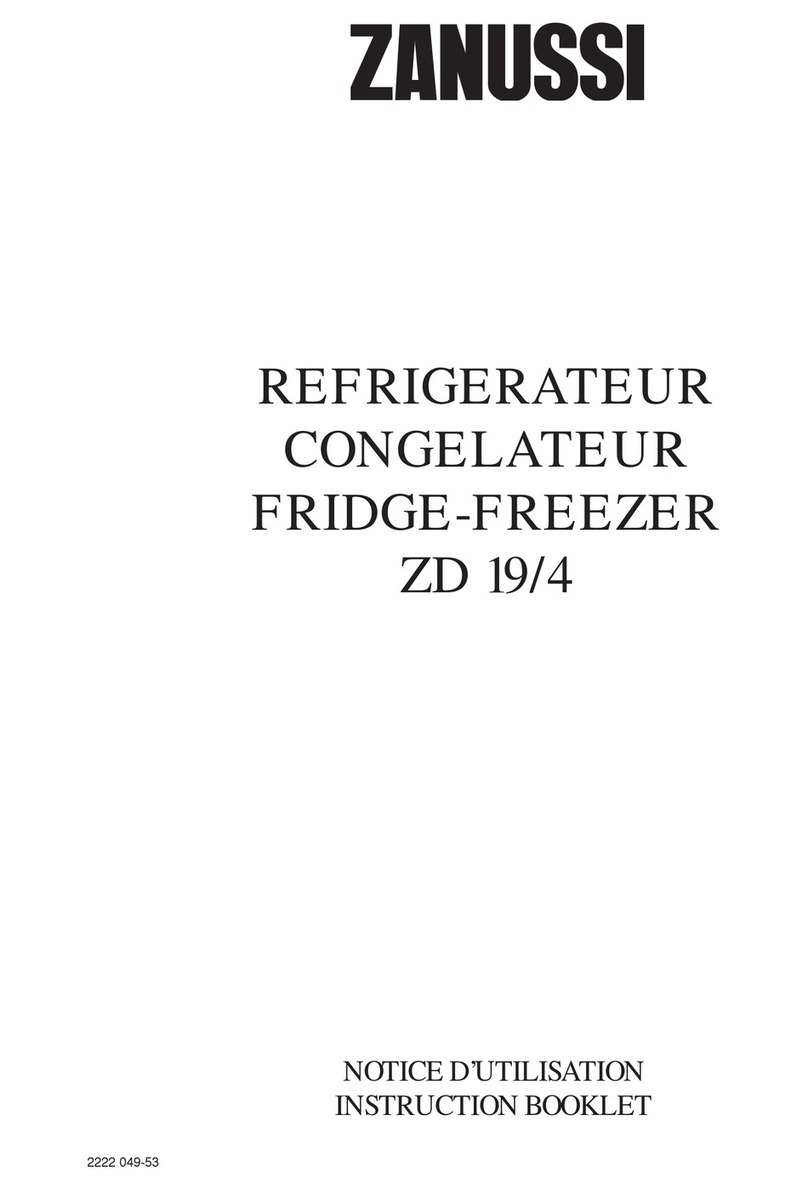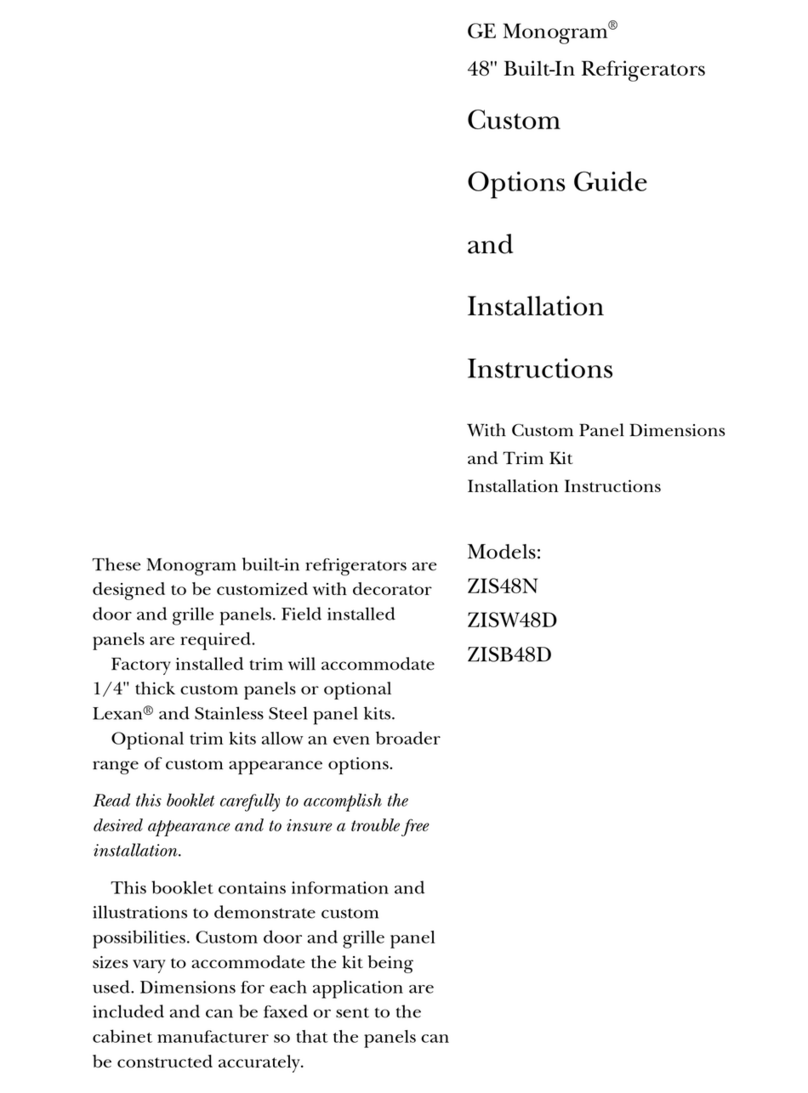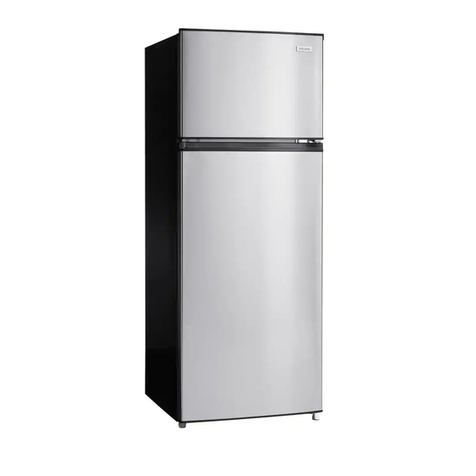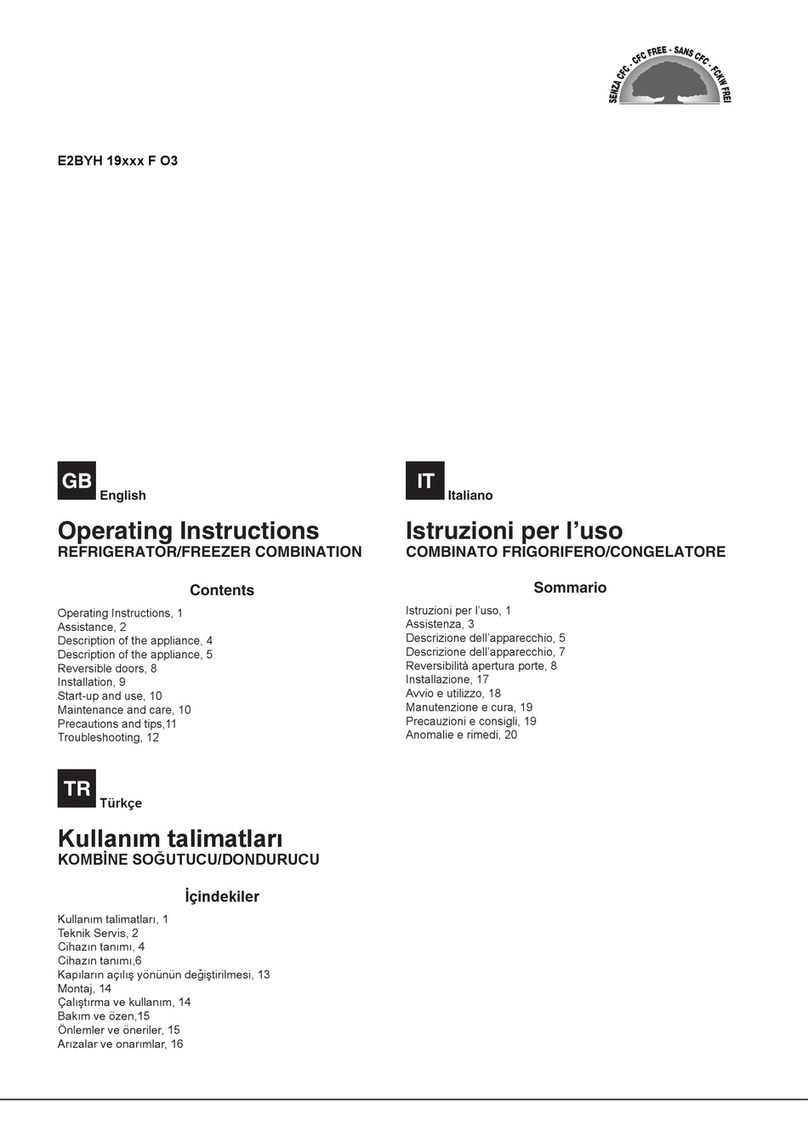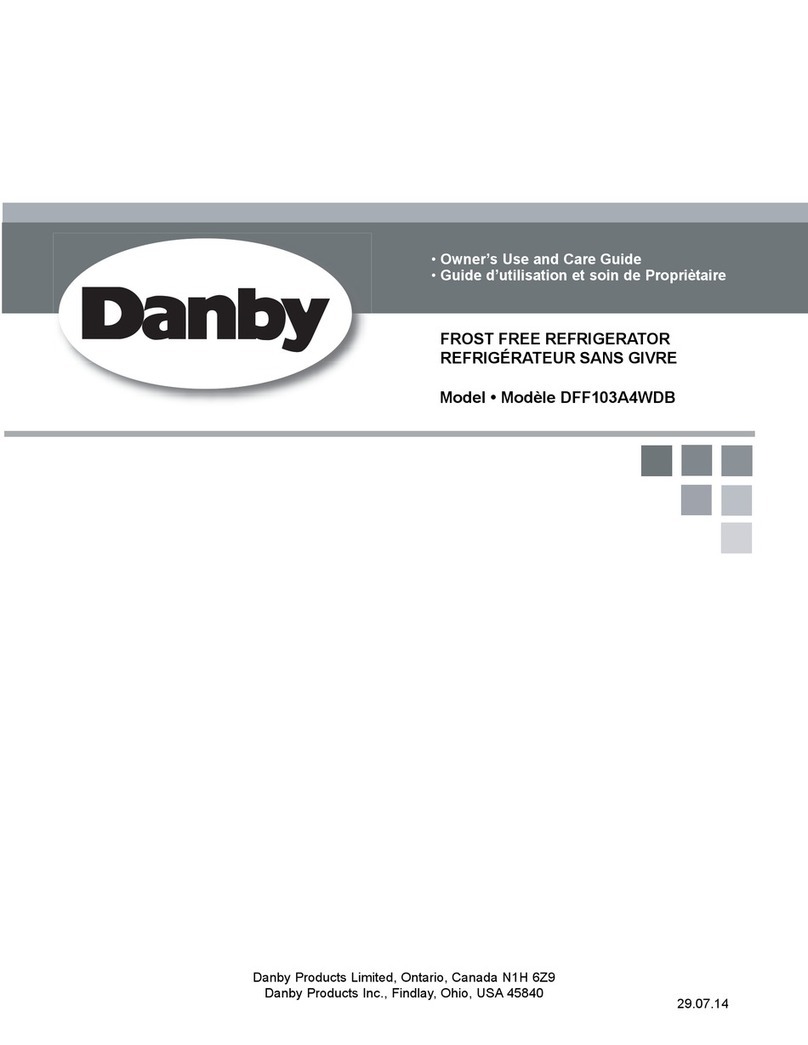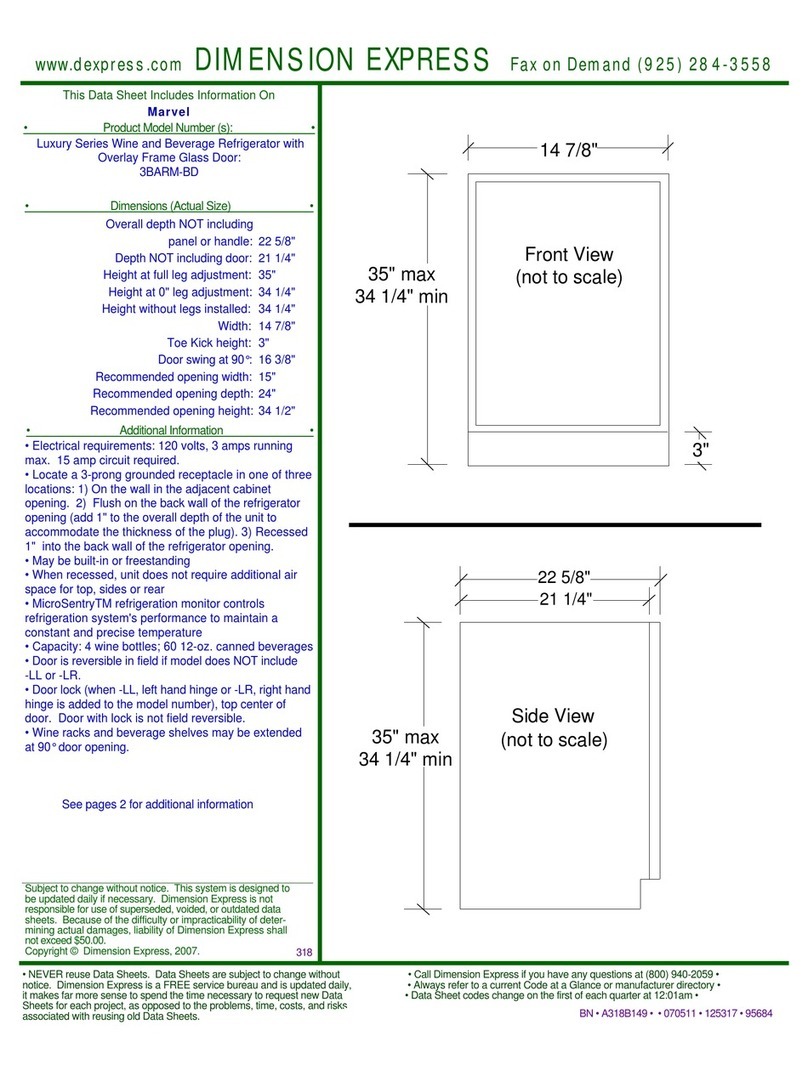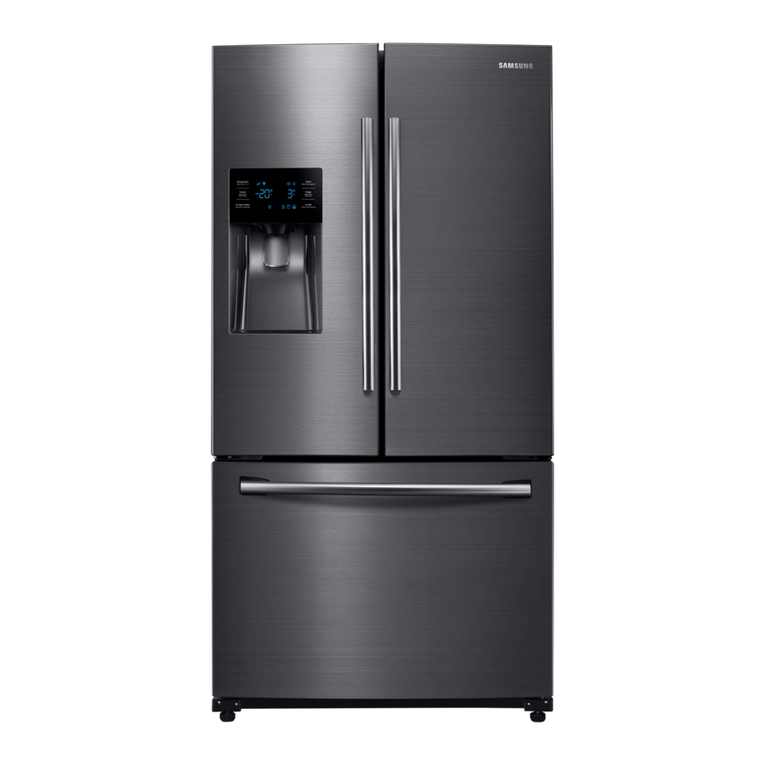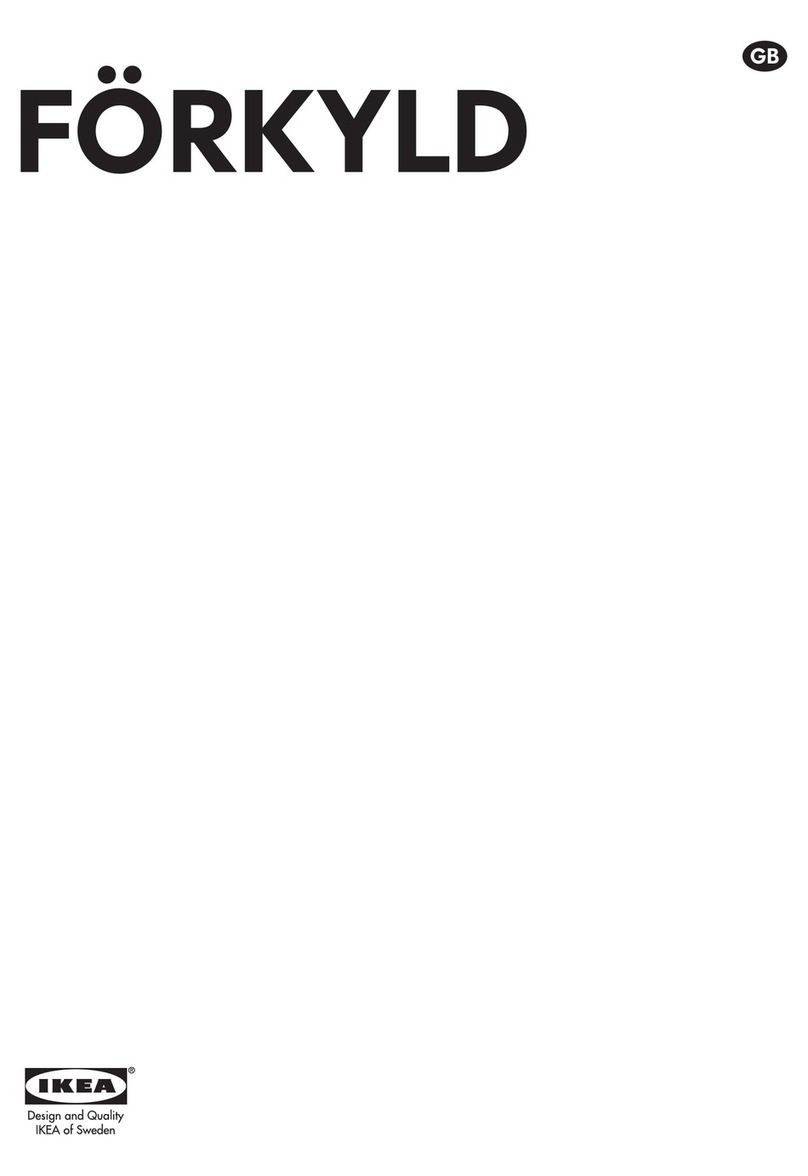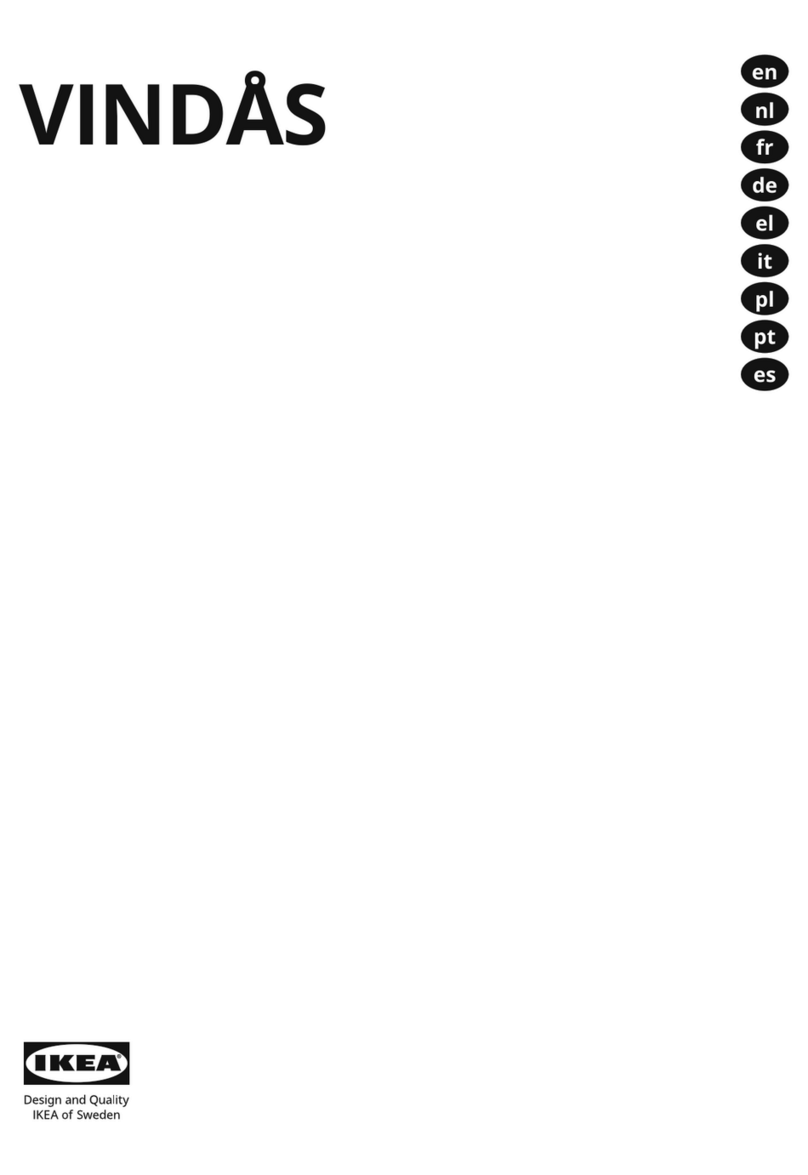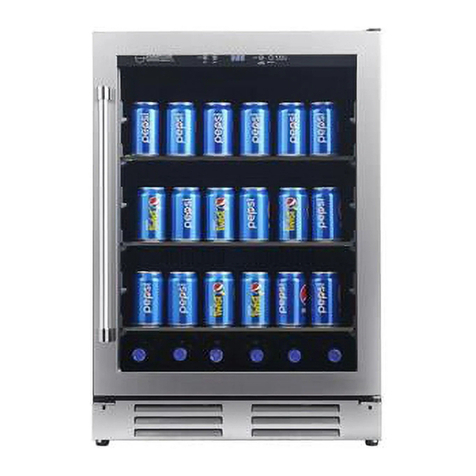
4. Maintenance and care of the appliance
4.1 Overall cleaning
Do not use hard brushes, clean steel balls, wire brushes,
abrasives, such as toothpastes, organic solvents (such as
alcohol, acetone, banana oil, etc.), boiling water, acid or
alkaline items clean refrigerator considering that this may
damage the fridge surface and interior.
Do not rinse with water so as not to affect the electrical insulation
properties.
Please unplug the refrigerator for defrost and cleaning.
Dusts behind the refrigerator and on the ground shall be timely cleaned to improve the cooling
effect and energy saving. The interior of the refrigerator should be cleaned regularly to avoid odor.
Soft towels or sponge dipped in water and non-corrosive neutral detergents are suggested for
cleaning. The freezer of shall be finally cleaned with clean water and dry cloth. Open the door for
natural drying before the power is turned on.
det erg ent
The appliance shall run continuously once it is started. Generally, the operation of the appliance
shall not be interrupted; or otherwise the service life may be impaired.
4.3 Out of operation
Power failure: In case of power failure, even if it is in summer, foods inside the appliance can be kept for
several hours; during the power failure, the times of door opening shall be reduced, and no more fresh
food shall be put into the appliance.
Long-time nonuse: The appliance shall be unplugged and then cleaned; then the doors are left open
to prevent odor.
Moving: Before the refrigerator is moved, take all objects inside out, fix the glass partitions, vegetable holder,
freezing chamber drawers and etc. with tape, and tighten the leveling feet; close the doors and seal them
with tape. During moving, the appliance shall not be laid upside down or horizontally, or be vibrated;
the inclination during movement shall be no more than 45°.
4.2 Defrosting
Power off the refrigerator.
Remove the food from the and place it properly to prevent food from melting.
Clear the drain pipe (to use soft materials to prevent damage to the liner), Prepare the water containers for
defrosting.
(pay attention to clean the compressor compartment water draining tray,Avoding overflow to the ground).
You can use the natural temperature for the natural defrost, you can also use the ice shovel to eliminate the
frost (to use plastic or wooden ice shovel, for avoding damage to the liner or pipe)
You can also use the appropriate amount of hot water to speed up the defrost, with a dry towel to dry
the water after defrosting.
After defrosting, put back the foods in cabinet , and power on the refrigerator.
refrigerator




















